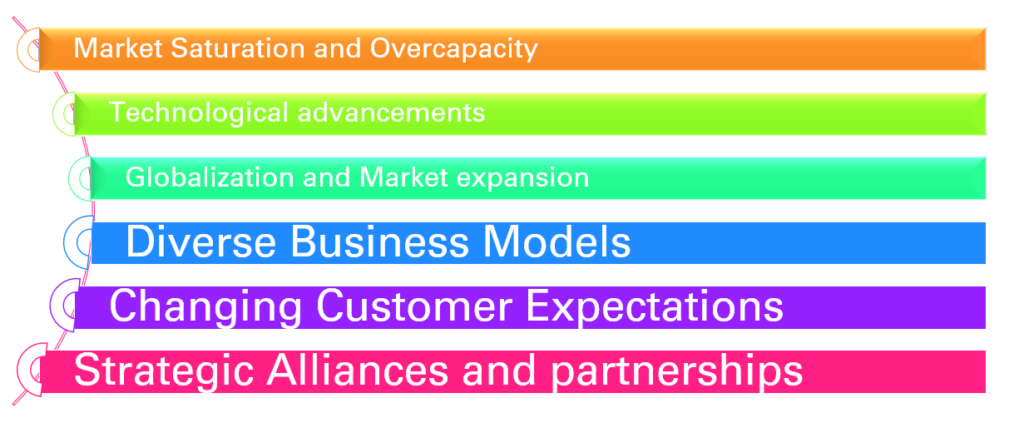In our earlier blog post, “Porter’s Five Forces: Unveiling Competitive Dynamics in Businesses,” we explored the renowned framework developed by Michael E. Porter to analyze industry competitiveness. While Porter’s Five Forces provided a robust foundation for understanding rivalry among competitors, it is essential to delve further into the layers that contribute to the intensity of complex rivalry. In this article, we will explore the factors that amplify the competitive intensity and drive organizations to innovate, adapt, and differentiate themselves in dynamic market landscapes.
Understanding Porter’s Five Forces:
Porter’s Five Forces framework examines five key elements that shape the competitive landscape of an industry. These forces include the bargaining power of suppliers, the bargaining power of buyers, the threat of new entrants, the threat of substitute products or services, and the intensity of competitive rivalry. While these forces are instrumental in assessing the competitive landscape, our focus will be on exploring the nuances and intricacies that elevate the intensity of complex rivalry.
Factors Amplifying Competitive Rivalry:

- Market Saturation and Overcapacity: In mature industries or markets with oversupply, the intensity of rivalry tends to be high. When supply surpasses demand, organizations compete fiercely to gain market share, leading to price wars, aggressive marketing strategies, and continuous product or service innovation.
- Technological Advancements: Rapid technological advancements can disrupt industries, making it imperative for organizations to keep up with the pace of change. Companies compete not only on price and quality but also on technological capabilities, such as AI integration, automation, or digital transformation initiatives. The pursuit of technological leadership further intensifies rivalry among competitors.
- Globalization and Market Expansion: As organizations expand globally, they encounter new competitors from different regions. This globalized market landscape amplifies rivalry as companies vie for market dominance, engage in cross-border competition, and adapt to local market dynamics and customer preferences.
- Diverse Business Models: In today’s interconnected business environment, companies with diverse business models often converge and compete across multiple industries. This convergence leads to increased rivalry as organizations leverage their strengths and capabilities to gain a competitive edge and capture market share in new domains.
- Changing Customer Expectations: Shifting customer expectations and preferences play a pivotal role in elevating competitive intensity. Organizations must continuously innovate and deliver superior customer experiences to differentiate themselves from competitors. This includes factors such as personalized services, seamless digital experiences, sustainability initiatives, and ethical business practices.
- Strategic Alliances and Partnerships: Strategic alliances and partnerships have become common strategies for organizations to strengthen their market position. However, these alliances can also intensify rivalry as competitors form alliances or merge to counter a dominant player or gain a competitive advantage in the market.
Conclusion:
While Porter’s Five Forces framework provides a solid foundation for analyzing competitive dynamics, understanding the layers beyond these forces helps us grasp the complexity and intensity of rivalry in modern business environments. Factors such as market saturation, technological advancements, globalization, diverse business models, changing customer expectations, and strategic alliances contribute to the ever-increasing intensity of complex rivalry.
To thrive amidst this intensity, organizations must embrace a mindset of continuous innovation, agility, and differentiation. By recognizing the intricate layers of competitive intensity and leveraging strategic insights, businesses can navigate these challenges and unlock opportunities for growth and success in a dynamic marketplace.
Remember, in the realm of complex rivalry, the ability to adapt, innovate, and forge new paths is what sets organizations apart and paves the way to sustained competitive advantage.